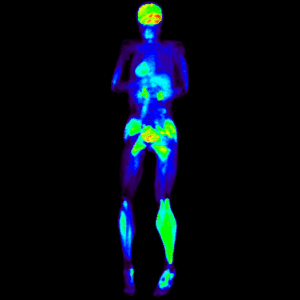by Thorsten Rudroff, PhD, FACSM, Colorado State University
Medical marijuana is commonly used to treat pain and spasticity, or uncontrolled muscle contractions, in people suffering from multiple sclerosis. While scientific studies have shown marijuana and its constituents to be fairly effective in treating these specific symptoms, not much else is known about the positive and negative effects marijuana may have on other disabling symptoms of MS. People with MS often have a multitude of symptoms and side effects related to the disease, and these symptoms often present themselves in very individualized ways. Currently our research group is hoping to investigate how medical marijuana may affect symptoms other than pain and spasticity, specifically motor impairments. Motor impairments range from difficulties walking, fine motor control, and the customary loss of strength that many people with MS develop.
In our study we are proposing to investigate this by performing a battery of physical function tests that are commonly used in the clinical setting, e.g. the timed up-and-go, the 5 rep sit-to-stand, and the 6 min walk test, on people who do and do not use medical marijuana. We also plan to determine whether the use of medical marijuana affects how the brain uses sugar, which is its primary source of energy. Previous investigations in our lab and others, have shown that people with MS often have a reduced usage of sugar in the central nervous system (brain and spinal cord) at rest and during exercise. This lower utilization has been linked to walking impairment, fatigue, and other side effects that people with MS often have. Our lab is unique in the fact that we are able to trace/quantify the usage of sugar as a source of energy by using what is called Positron Emission Tomography, or PET.
 PET imaging is often used in cancer diagnostics, staging, and to determine the effects of treatment. We are one of the few labs in the world that use this technique for the investigation of exercise/physical activity related functions, such as the functional tests we are planning to perform. PET produces 3-dimensional images of the body to show where the sugar is being used. Using specialized computer software we can them compare the images of the groups and determine how regular marijuana usage affects the “normal” usage of sugar in people with MS.
PET imaging is often used in cancer diagnostics, staging, and to determine the effects of treatment. We are one of the few labs in the world that use this technique for the investigation of exercise/physical activity related functions, such as the functional tests we are planning to perform. PET produces 3-dimensional images of the body to show where the sugar is being used. Using specialized computer software we can them compare the images of the groups and determine how regular marijuana usage affects the “normal” usage of sugar in people with MS.
Once the data has been collected we can compare the results from the medical marijuana users group to the “control” group and determine if there are any differences between the groups’ performance on any of the tasks. These comparisons will be the foundation for larger future research studies investigating the additional benefits of medical marijuana as a treatment for symptoms of MS.
In order to raise money to perform these studies we are currently running a crowdfunding campaign hosted by Colorado State University Charge!
The funds raised from the crowdfunding campaign will be used to pay our participants for their time spent in the lab, as well as to cover the cost of the PET imaging. At the conclusion of this study we hope to preliminarily identify additional benefits and potential side effects of medical marijuana and continue to scientifically justify the continued use of medical marijuana for people with MS.
 Thorsten Rudroff, PhD, FACSM is an Assistant Professor in the Department of Health and Exercise Science at Colorado State University (CSU) where he is the Director of the Integrative Neurophysiology Laboratory. Dr. Rudroff’s research interests include the neurophysiology of motor function and fatigue. He is unique in the fact that he employs neuroimaging techniques (e.g. Positron Emission Tomography (PET), Computed Tomography (CT), and Magnetic Resonance Imaging (MRI)) to study the interaction between the central nervous system and muscle. His current research projects are aimed at identifying the effects and mechanisms of cannabis on motor and cognitive function in people with Multiple Sclerosis.
Thorsten Rudroff, PhD, FACSM is an Assistant Professor in the Department of Health and Exercise Science at Colorado State University (CSU) where he is the Director of the Integrative Neurophysiology Laboratory. Dr. Rudroff’s research interests include the neurophysiology of motor function and fatigue. He is unique in the fact that he employs neuroimaging techniques (e.g. Positron Emission Tomography (PET), Computed Tomography (CT), and Magnetic Resonance Imaging (MRI)) to study the interaction between the central nervous system and muscle. His current research projects are aimed at identifying the effects and mechanisms of cannabis on motor and cognitive function in people with Multiple Sclerosis.
His research has been funded by the National Institutes of Health/National Institute on Aging to investigate muscle energetics in older adults and by the National Multiple Sclerosis Society to investigate skeletal muscle glucose uptake during walking in people with MS. Currently, he is conducting a crowdfunding campaign to collect preliminary data identifying the benefits and potential side effects of medical marijuana use by people with MS. The goals of this research are to improve the quality of life for people with MS and scientifically justify its continued use as a therapeutic agent in neurological diseases.

Follow NCIA
Newsletter
Facebook
Twitter
LinkedIn
Instagram
–